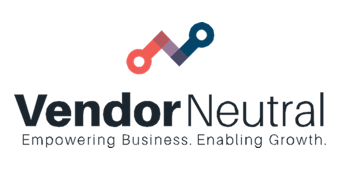3 Predictions On The Future Of Sales Technology
“These are uncertain times” is a dramatic understatement. The COVID-19 pandemic has dramatically altered the way we live and work. How is it affecting sales technology? Vendor Neutral’s analyst recently shared insights into the future of sales technology.
SalesTech Vendors and Consumers Will Evolve
The pandemic is forcing vendors to evolve. They must update their products to meet consumer needs, offering more all-in-one solutions. Mature vendors across various categories, including sales enablement, content management, and account and opportunity planning will look for ways to sell to smaller companies. The pandemic gives them an opportunity to expand their audiences. Smaller companies that had no need for virtual solutions pre-pandemic are finding they are essential now, and vendors are realizing that gaining the business of these smaller companies is top priority.
The pandemic has driven old and new players to expand their horizons. Vendors must find positioning for work-from-home support and effective ways to tie virtual teams together. Smaller vendors are eager to go to market, and we’re going to see some overtake the larger vendors when it comes to innovation in this new environment.
The pandemic is evening the playing field somewhat. Giants like Microsoft saw 75 million active users on Microsoft Teams in April, more than doubling their users from the 32 million recorded as of March 11. However, Zoom shot up as a big player due to the pandemic. They saw 300 million daily meeting participants in April, compared to a peak of 10 million in December 2019, according to statistics from MarketWatch.
Consumers are evolving too. Tight budgets will move buyers to look at “good enough” solutions. Buyers want the most bang for their buck. They will carefully assess their needs to choose SalesTech. For example, some may look for cheap solutions that cover their top priorities, such as only scheduling, just video or simply prospect engagement. While others will look to solutions with an important “core” function (opportunity planning and prospect engagement) and “good enough” function for other actions (easy content management or adequate scheduling). There is already a lot of overlap in SalesTech solutions, including sales enablement, prospect engagement and opportunity management. Buyers will be looking to leverage those cross-overs.
Not everything will evolve, however. Database management, account targeting, as well as go-to-market and back office applications will remain much the same. Applications such as quota will help control costs, and data will remain a critical piece of a vendor’s marketing own.
According to McKinsey, almost 90 percent of sales have moved to a video conferencing/web-based sales model. More than half of the sales teams they surveyed think this model is as effective or more effective than pre-COVID models. Additionally, 79 percent said these new models are here to stay. Managers can not reason that we’ll get back to normal. They must recognize the way salespersons work and the way buyers purchase have permanently changed.
"Zoom shot up as a big player due to the pandemic. They saw 300 million daily meeting participants in April, compared to a peak of 10 million in December 2019, according to statistics from MarketWatch."
New Challenges Lead to New Innovations
New challenges will force developers to innovate. Oversight of remote workers will be a priority. This will need to be a focus of SalesTech solutions. The challenge is doing it in a way that is not an onerous burden on salespersons. Oversight tools must have clear benefits. Think, “Here’s a carrot,” not “We know what you are doing all the time.”
Oversight of remote workers also involves ensuring they have the tools they need. One survey found that the average worker loses 22 minutes a day in general IT troubleshooting tasks. Streamlining tasks and providing oversight that produces constructive feedback will be key elements of a successful sales stack going forward.
Organizing data is a huge challenge when working in a virtual world. A seller focused dashboard that connects data from various tools will be asset. It needs to be easy-to-understand, offering a clear view of what has been done and what needs to be done. Rather than bringing in a new category of tech to accomplish this, some already existing tools will work at incorporating data and content from other solutions. Prospect engagement, and account and opportunity planning tools are positioned to take this leap. Training solutions could be incorporated in this dashboard as well, adding a single source of recommendations and coaching for sales reps.
Distributors and manufacturing companies in particular will benefit from a focused dashboard. Learn more tips for creating a successful sales team by viewing the webinar, How Distributors & Manufacturers Can Equip Their Sales Teams for Success.
"Organizing data is a huge challenge when working in a virtual world. A seller focused dashboard that connects data from various tools will be asset."
A Slowdown in Some Areas
Areas that were top priority pre-pandemic will suddenly experience a slowdown in demand and innovation. For example, mobile will matter less. “Work on-the-go” is no longer a priority since most salespersons are working from their living rooms. Where mobile will matter is with “off-line” conversations between sellers and buyers once a deal is at a certain point in the buyer’s journey.
This comes back to the need for oversight solutions. Managers need solutions that will help them keep track of how sales reps are performing. That includes solutions to track and assess interactions that take place “off-line.”
There will also be downward pressure to reduce subscription costs. This pressure will cause a slowdown in vendors introducing new functions, as well as a slowdown in areas where consolidation might have taken place among mid-size SalesTech vendors. The good news is that McKinsey’s survey revealed that many (53 percent) of companies are maintaining or slightly increasing their spend.
“Given some of the grim economic signals, we would have expected more drastic reductions in spend,” commented McKinsey. While costs are being cut, companies recognize the importance of investing in tech that will help them increase agility and productivity. While companies are tightening their belts and reassessing priorities, they are not slashing budgets to extremes.
To select the right solutions that provide oversight of your reps, first managers must assess their teams and figure out what training is needed. Watch the webinar, Everything Sales Leaderships Needs to Build a Team of A-Players to learn how to perfect your team.

Steven Wright, Chief Analyst
is Vendor Neutral’s Chief Analyst Steven targets how new technologies and practices can better equip B2B sellers to focus on customer’s needs. He looks for the intersection of technology and methodology to help organizations better enable sellers to improve customer understanding and sales progression via analytics and prescriptive actions that improve sales. With over 20 years of experience in sales enablement as both a practitioner at companies such as IBM and an analyst at Forrester, Steven focuses on improving sellers’ skills at all levels and has worked with hundreds of companies, both customers and vendors. Steven currently manages Vendor Neutral Certified Profiles, which offer buyers detailed profiles of sales technology solutions to simplify finding the right tech for their needs.


